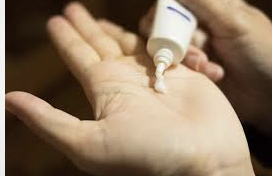Health creams serve a variety of functions, from hydrating dry skin to treating specific medical conditions, each tailored to address different needs. Understanding how these creams work requires an exploration of their formulations, mechanisms of action, and the role their active ingredients play in skin health and repair.
1. Moisturizing and Hydrating:
The primary function of many health creams is to moisturize and hydrate the skin. These creams generally include emollients, humectants, and occlusives, which collaborate to draw in and lock in moisture. Emollients like lanolin or jojoba oil help soften and smooth the skin by bridging the gaps between skin cells. Humectants, like glycerin and hyaluronic acid, pull water into the skin’s outer layer from deeper within and from the surrounding environment, boosting skin hydration. Occlusives, like petrolatum or beeswax, form a protective layer on the skin’s surface, trapping moisture and reducing its loss. This multi-faceted approach helps to maintain skin elasticity, prevent dryness, and protect the skin barrier, which is essential for overall skin health.
2. Treating Skin Conditions:
Health creams designed to treat specific skin conditions often contain active ingredients that target particular symptoms or underlying causes. For instance, corticosteroid creams reduce inflammation and are commonly used for conditions like eczema and psoriasis. Antifungal creams, containing ingredients like clotrimazole or miconazole, are used to treat fungal infections by disrupting the cell membrane of the fungus, leading to its death. Similarly, acne creams may use benzoyl peroxide to kill bacteria and reduce inflammation or salicylic acid to help clear blocked pores and reduce swelling. You may even have something like a CBD cream, which can be used to target pain in particular areas.
3. Anti-Aging Properties:
Anti-aging creams focus on minimizing the signs of aging, such as wrinkles and decreased elasticity. These formulations may include retinoids, which promote cell turnover and stimulate collagen production; antioxidants like vitamins C and E, which fight free radicals and prevent damage to the skin’s structural components; and peptides, which can help rebuild proteins in the skin like collagen, making it firmer and smoother.
4. Delivery Systems:
The effectiveness of a health cream is significantly influenced by its delivery system—the method by which active ingredients are transported into the skin. Modern health creams may use liposomes, microcapsules, or nanoparticles to encapsulate active ingredients, protecting them from degradation and enabling deeper penetration into the skin layers where they can exert their effects more effectively. This technology ensures that active ingredients are released slowly over time, increasing their impact and reducing potential irritation.
5. Barrier Protection and Repair:
Certain health creams are specifically designed to protect and repair the skin barrier, especially in conditions like atopic dermatitis, where the barrier function is compromised. Ingredients such as ceramides, fatty acids, and cholesterol, which are natural components of the skin’s own lipids, are included to mimic and bolster the skin’s barrier, preventing moisture loss and protecting against irritants and allergens.
Overall, health creams work by a combination of moisturizing, delivering therapeutic agents, and protecting the skin barrier. They utilize a complex array of ingredients and technologies to address everything from simple dryness to complex dermatological conditions. When selecting a health cream, considering the specific ingredients and their intended purpose is crucial to achieving the best results for one’s skin health needs.




















